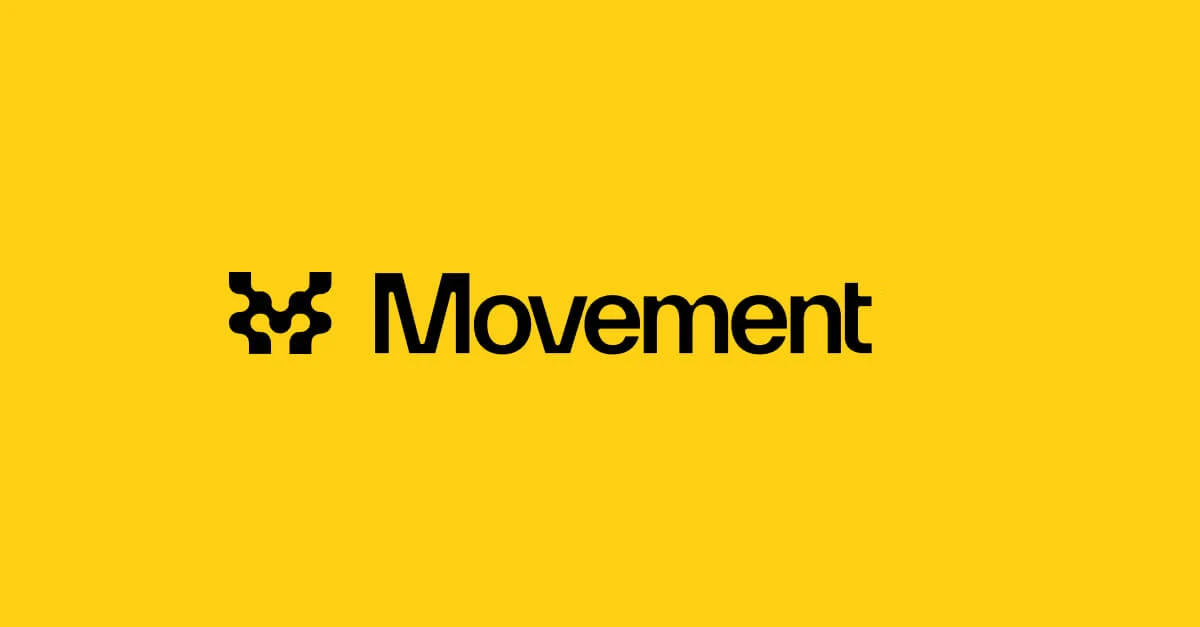Movement Network Foundation , an organization dedicated to driving innovation and promoting MoveVM technology, today announced the successful launch of मूवमेंट लैब्स ’ Movement Mainnet Beta and $MOVE ’s टोकन Generation Event (TGE), marking an important milestone in the successful integration of the first Move-based blockchain into Ethereum.
The launch of Mainnet Beta represents the first phase of Movement’s production infrastructure. During this phase, infrastructure providers can deploy basic network components including follower nodes, RPC nodes, and indexers. Network operators will focus on two key tasks: ensuring the correct synchronization of the network and verifying safety measures. This managed launch environment lays the foundation for Movement’s innovative “ postconfirmations ”, a mechanism that can achieve transaction finality in as little as one second – much faster than existing Ethereum scaling solutions, which can take minutes or even days.
Movement Foundation is launching $MOVE tokens through its MoveDrop program , distributing up to 1 billion MOVE tokens (10% of the maximum supply) to the community. MoveDrop rewards meaningful participation and real technical contributions, and aims to build a community-driven network where token holders can actively participate in protecting network infrastructure and governance, reflecting Movements commitment to sustainable ecosystem development.
Unlike next-generation Layer 1 blockchains that operate in isolation, Movement introduces a solution designed to enhance what’s possible on Ethereum. Movement integrates directly with Ethereum, leveraging its strong network effects and security while expanding the pool of secure and innovative applications. With Movement, all Move developers automatically become Ethereum developers.
“What’s unique about Movement is our vision for true utility on Ethereum,” said Rushi Manche, co-founder of Movement Labs. “By bringing the Move language to the EVM, we’re not just creating another L2, we’re building a bridge that turns every Move developer into an Ethereum developer, dramatically expanding the potential of the ecosystem.”
At the heart of Movement’s appeal lies the Move programming language, developed for Meta’s Diem project and praised for its enhanced security and expressiveness. Move’s resource-oriented programming model is designed to ensure secure and bug-free smart contract development, eliminating more than 90% of audit-first attack vectors.
“The power of Movement lies in our active community of over 800 builders and 840+ contributors who have been on this journey with us,” said Cooper Scanlon, co-founder of Movement Labs. “The launch of Mainnet Beta and MoveDrop is about empowering developers and users to shape the future of Ethereum scaling together. Whether you’re building on the Movement Network, testing new protocols, creating content, or participating in governance, there’s a place for you in our ecosystem.”
To celebrate this milestone, the Movement Network Foundation also announced its first NFT program – a community-driven competition to create official commemorative artwork for the Mainnet Beta launch.
“Our community has been integral in building Movement, so it’s only fitting that the artwork they’ve created commemorates this historic moment,” added Scanlon. “This genesis NFT will be a testament to the creativity of our ecosystem.” The winning design will be minted as Movement’s first NFT, and the top three submitters will receive $1,000 in prizes.
To learn more about Movement Labs and its Mainnet Beta, visit movementnetwork.xyz or follow @movementlabsxyz, @movementfdn, and @Move_Collective on Twitter.
मूवमेंट लैब्स के बारे में
मूवमेंट लैब्स develops the Movement Network, a modular Move-based blockchain ecosystem. The company is creating the first Move virtual machine L2 for Ethereum and providing open source tools to promote the adoption of Move on the blockchain. Their platform enables developers to easily launch high-performance Move VM rollups, bridging the Move and EVM ecosystems. Through Move Collective, their accelerator program, Movement Labs has fostered over 12 innovative projects and teams, facilitating the continued growth of Move-based applications. With $38 million in Series A funding, Movement Labs is driving the development of Move-based technologies and blockchain interoperability in Web3.
Follow Movement Labs on एक्स और कलह नवीनतम अपडेट के लिए.
About Movement Network Foundation
The Movement Network Foundation is the driving force behind the Movement ecosystem, dedicated to driving innovation and fostering adoption of MoveVM technology. The Foundation is responsible for the development of the Movement Network, a cutting-edge Layer 2 solution built with MoveVM, settled to Ethereum. Through its MoveDrop program and ecosystem initiatives, the Foundation supports developers, projects, and community contributors in building the next generation of decentralized applications. For more information, visit movementfdn.xyz or follow @movementfdn on X.
This article is sourced from the internet: Movement Announces TGE and Movement Mainnet Beta
Related: a16z Investor: The Future of Stablecoins from 250 Years of Banking History
Original article by: Sam Broner Original translation: TechFlow Millions of people have traded trillions of dollars in stablecoins, but the definition and understanding of the category remains murky. Stablecoins are stores of value and mediums of exchange, usually pegged to the U.S. dollar, but not necessarily so. People classify them along two dimensions: from undercollateralized to overcollateralized, and from centralized to decentralized. This classification helps understand the relationship between technical structure and risk , and dispels misunderstandings about stablecoins. I will propose another helpful way of thinking based on this framework. To understand the richness and limitations of stablecoin designs, it is useful to draw on the history of banking: what works, what doesn’t, and why. Like many products in cryptocurrencies, stablecoins may quickly repeat banking history, starting with simple…









👋